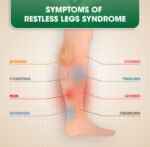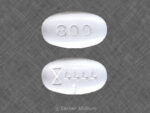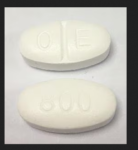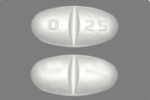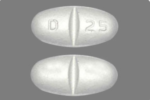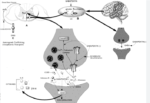Gabapentin capsules, tablets, and oral solution are used along with other medications to help control certain types of seizures in people who have epilepsy. Gabapentin capsules, tablets, and oral solution are also used to relieve the pain of postherpetic neuralgia (PHN; the burning, stabbing pain or aches that may last for months or years after an attack of shingles). Gabapentin extended-release tablets (Horizant) are used to treat restless legs syndrome (RLS; a condition that causes discomfort in the legs and a strong urge to move the legs, especially at night and when sitting or lying down). Gabapentin is in a class of medications called anticonvulsants. Gabapentin treats seizures by decreasing abnormal excitement in the brain.
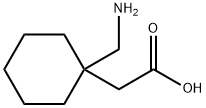
- Chemical Name:
- Gabapentin
- Synonyms
- ci945;go3450;goe2450;GOE-3450;Aclonium;NEURONTIN;AKOS 92109;GABAPENTIN;Gababentin;GABAPENTINE
- CBNumber:
- CB3263316
- Molecular Formula:
- C9H17NO2
- Formula Weight:
- 171.24
Gabapentin relieves the pain of PHN by changing the way the body senses pain. It is not known exactly how gabapentin works to treat restless legs syndrome.
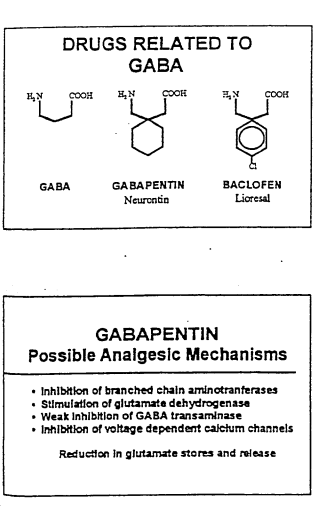
Gabapentin comes as a capsule, a tablet, an extended-release (long-acting) tablet, and an oral solution (liquid) to take by mouth. Gabapentin capsules, tablets, and oral solution are usually taken with a full glass of water (8 ounces [240 milliliters]), with or without food, three times a day.
These medications should be taken at evenly spaced times throughout the day and night; no more than 12 hours should pass between doses. The extended-release tablet (Horizant) is taken with food once daily at about 5 PM. Follow the directions on your prescription label carefully, and ask your doctor or pharmacist to explain any part you do not understand. Take gabapentin exactly as directed. Do not take more or less of it or take it more often than prescribed by your doctor.
Gabapentin extended-release tablets cannot be substituted for another type of gabapentin product. Be sure that you receive only the type of gabapentin that was prescribed by your doctor. Ask your pharmacist if you have any questions about the type of gabapentin you were given.
Swallow the extended-release tablets whole; do not cut, chew, or crush them.
If your doctor tells you to take one-half of a regular tablet as part of your dose, carefully split the tablet along the score mark. Use the other half-tablet as part of your next dose. Properly dispose of any half-tablets that you have not used within several days of breaking them.
If you are taking gabapentin to control seizures or PHN, your doctor will probably start you on a low dose of gabapentin and gradually increase your dose as needed to treat your condition. If you are taking gabapentin to treat PHN, tell your doctor if your symptoms do not improve during your treatment.
Gabapentin may help to control your condition but will not cure it. Continue to take gabapentin even if you feel well. Do not stop taking gabapentin without talking to your doctor, even if you experience side effects such as unusual changes in behavior or mood. If you suddenly stop taking gabapentin tablets, capsules, or oral solution, you may experience withdrawal symptoms such as anxiety, difficulty falling asleep or staying asleep, nausea, pain, and sweating. If you are taking gabapentin to treat seizures and you suddenly stop taking the medication, you may experience seizures more often. Your doctor may decrease your dose gradually over at least a week.
Your doctor or pharmacist will give you the manufacturer’s patient information sheet (Medication Guide) when you begin treatment with gabapentin and each time you refill your prescription. Read the information carefully and ask your doctor or pharmacist if you have any questions. You can also visit the Food and Drug Administration (FDA) website (http://www.fda.gov/Drugs) or the manufacturer’s website to obtain the Medication Guide.
Computed Properties
| Molecular Weight | 171.23678 g/mol |
| Molecular Formula | C9H17NO2 |
| XLogP3 | -1.1 |
| Hydrogen Bond Donor Count | 2 |
| Hydrogen Bond Acceptor Count | 3 |
| Rotatable Bond Count | 3 |
| Exact Mass | 171.125929 g/mol |
| Monoisotopic Mass | 171.125929 g/mol |
| Topological Polar Surface Area | 63.3 A^2 |
| Heavy Atom Count | 12 |
| Formal Charge | 0 |
| Complexity | 162 |
| Isotope Atom Count | 0 |
| Defined Atom Stereocenter Count | 0 |
| Undefined Atom Stereocenter Count | 0 |
| Defined Bond Stereocenter Count | 0 |
| Undefined Bond Stereocenter Count | 0 |
| Covalently-Bonded Unit Count | 1 |
Gabapentin Chemical Properties, Uses, Production
Description
Gabapentin is a second- generation antiepileptic drug (AED) known under the proprietary brand name of Neurontin® (Pfizer, New York, NY) in the UK and USA.
Generic formulation
MHRA/ CHM advice to minimize risk when switching patients with epilepsy between different manufacturers’ products (including generic products):
- It is usually unnecessary to ensure that patients are maintained on a specific manufacturer’s product unless there are specific concerns, such as patient anxiety and risk of confusion/ dosing error.
Indications
Epilepsy: monotherapy or adjunctive therapy of focal seizures with or without secondary generalization. Recommendations summarized from NICE (2012)
- Seizure types: adjunctive (focal seizures), contraindicated (generalized tonic- clonic seizures generalized tonic- clonic seizures if there are absence or myoclonic seizures, or if juvenile myoclonic epilepsy is suspected, tonic/ atonic seizures, absence seizures, myoclonic seizures).
- Epilepsy types: adjunctive (benign epilepsy with centrotemporal spikes, Panayiotopoulos syndrome, late- onset childhood occipital epilepsy), contraindicated (absence syndromes, juvenile myoclonic epilepsy, idiopathic generalized epilepsy, Dravet syndrome, Lennox– Gastaut syndrome)
- Psychiatry— treatment of anxiety disorders (unlicensed); treatment of alcohol withdrawal symptoms (unlicensed).
- Neurology— treatment of neuropathic pain and restless leg syndrome (unlicensed) and prophylaxis of migraine (unlicensed).
Dose titration
Monotherapy or adjunctive therapy
300 mg od for day 1300 mg bd for day 2300 mg td for day 3 (or 300 mg td for day 1), then increased by 300 mg every 2– 3 days, divided into three doses; usual maintenance 900– 3600 mg daily, divided into three doses (max. 4800 mg daily) If gabapentin has to be discontinued, it is recommended this should be done gradually over a minimum of 1 week, independent of the indication.
Cautions
- Patients with a history of psychotic illness.
- Patients with mixed seizures (including absences).
- Patients with diabetes mellitus.
- Elderly patients.
Interactions
With AEDs
Nil.
With other drugs
- Patients who require concomitant treatment with opioids should be carefully observed for signs of respiratory depression and/ or sedation, and the dose of gabapentin or opioid should be reduced appropriately
- Co-administration of gabapentin with antacids containing aluminium and magnesium, reduces gabapentin bioavailability up to 24%, and it is therefore recommended that gabapentin be taken at the earliest 2 hours following antacid administration
With alcohol/food
There are no known specific interactions between alcohol and gabapentin and there are no specific foods that must be excluded from diet when taking gabapentin.
Special populations
Renal impairment
Reduce maintenance dose according to degree of reduction in creatinine clearance.
Pregnancy
- The dose of gabapentin should be monitored carefully during pregnancy and after birth, and adjustments made on a clinical basis.
- No definite conclusion can be made as to whether gabapentin is associated with an increased risk of congenital malformations when taken during pregnancy. Gabapentin should not be used during pregnancy unless the potential benefit to the mother clearly outweighs the potential risk to the foetus.
- Gabapentin is excreted in human milk. Because the effect on the breastfed infant is unknown, gabapentin should be used in breastfeeding mothers with caution and only if the benefits clearly outweigh the risks.
Behavioural and cognitive effects in patients with epilepsy
Gabapentin has a relatively favourable behavioural profile, although paradoxical hyperactivity, irritability and aggression have been occasionally reported, especially in patients with severe intellectual disabilities. The cognitive profile of gabapentin is equally favourable, as this AED has been associated with only minor cognitive difficulties (mainly in the attention domain).
Psychiatric use
Although gabapentin has no approved indications in psychiatry, it has shown efficacy in the treatment of anxiety disorders, especially social phobia. Other offlabel uses include other anxiety disorders (panic disorder, post- traumatic stress disorder), alcohol dependence and withdrawal, behavioural and psychological symptoms of dementia, and aggression. Gabapentin has also been proposed to be useful in the maintenance treatment of bipolar disorder as adjunctive therapy.
Description
Gabapentin was introduced in 1993 in the UK and early 1994 in the USA as an adjunctive therapy in the treatment of refractory partial seizures and secondarily generalized tonic-clonic seizures. Although being a lipophilic analog of the neurotransmitter GABA, gabapentin appears to exert its anticonvulsive function by a GABA receptor independent mechanism, possibly involving the L-system amino acid transporter protein. Gabapentin easily crosses the blood brain barrier and exhibits a favorable pharmacokinetic profile with high tolerability. It does not interfere with the metabolism of other concomitant administered antiepileptic drugs, thus having a low potential for drug interactions. Studies are currently underway for the use of gabapentin as mono-therapy for the treatment of various seizures.
Chemical Properties
White Crystalline Solid
Originator
Warner-Lambert (U.S.A.)
Uses
Amino acid structurally related to γ-Aminobutyric Acid (GABA), designed to cross the blood brain barrier. Used as an anticonvulsant.
Uses
antipsychotic, 5HT2A antagonist
Uses
selective H1-receptor antagonist
Uses
For the treatment of adult Restless Legs Syndrome (RLS) and postherpetic neuralgia (PHN).
Definition
ChEBI: A gamma-amino acid that is cyclohexane substituted at position 1 by aminomethyl and carboxymethyl groups. Used for treatment of neuropathic pain and restless legs syndrome.
Indications
Gabapentin (Neurontin) significantly decreases pain scores and sleep interference associated with PHN. An initial dose of 300 mg/day is increased over 4 weeks (900, 1,800, 2,400, 3,600 mg/day divided t.i.d.) until efficacy is obtained or side effects become intolerable.
Manufacturing Process
32.8 g 1,1-cyclohexane-diacetic anhydride are mixed with 7 g anhydrous methanol and heated under reflux for 1 hour. After evaporation of the reaction mixture in a vacuum, was obtained 37.5 g monomethyl 1,1-cyclohexanediacetate in the form of a yellowish oil.
5.6 ml triethylamine in 16 ml anhydrous acetone are added dropwise at 0°C to a solution of 7.28 g monomethyl 1,1-cyclohexane-diacetate, then a solution of 3.6 ml ethyl chloroformate in 16 ml anhydrous acetone is added thereto. The reaction mixture is further stirred for 30 min at 0°C and and then a solution of 3.4 g sodium azide in 12 ml water added dropwise thereto. The reaction mixture is stirred for 1 hour at 0°C, then poured into ice water and extracted three times with 50 ml amounts of ice-cold toluene. The combined extracts are dried over anhydrous sodium sulphate at 0°C and subsequently introduced drop-wise into a flask pre-heated to 100°C. The mixture is then heated for a further hour under reflux and thereafter evaporated in a vacuum. The crude methyl 1-isocyanatomethyl-1-cyclohexane-acetate which remains behind is heated under reflux for 3 hours with 50 ml 20% hydrochloric acid. After cooling the solution, it is extracted three times with 100 ml amounts of chloroform to remove the 1-amino-methyl-1-cyclohexane-acetic acid lactam formed as a by-product product and the aqueous hydrochloric acid solution evaporated in a vacuum, whereby 1-aminomethyl-1-cyclohexane-acetic acid crystallises as the hydrochloride; m.p. 117-118°C, after recrystallisation from acetone/methanol/ether. After recrystallization from methanol/ether the melting point of the product is 129-133°C.
By treatment with a basic ion exchanger and crystallisation from ethanol/ether, there is obtained pure 1-amino-methyl-1-cyclohexane-acetic acid; melting point 162-166°C.
brand name
Neurontin (ParkeDavis); Neurontin (Pfizer).
Therapeutic Function
Anticonvulsant
Biological Functions
Gabapentin (Neurotonin) was initially designed to be a rigid analogue of GABA. When it was discovered to have antiepileptic properties, it was assumed that this activity was related to a GABAergic mechanism. However, subsequent studies have failed to show any GABAergic activity of gabapentin. Although it has not yet been possible to ascribe any definite mechanism to its antiepileptic activity, there is recent evidence that it may function as an agonist at GABAB receptors in the brain.
Gabapentin is recommended as adjunctive therapy in the treatment of partial seizures in adults.When used with other drugs, it appears to be an effective AED; it is usually not effective when employed alone for patients with severe seizures.
Gabapentin is generally well tolerated, with somnolence, dizziness, and ataxia the most commonly reported adverse effects. A low incidence of potentially serious side effects and no significant allergic reactions have been reported.
General Description
Gabapentin and its closely related analog pregabalin,(S)-3-isobutyl-GABA, are broad-spectrum anticonvulsantswith multiple mechanisms of action.24,51 Inaddition to modulating calcium influx and stimulateGABA biosynthesis as discussed earlier, they also competefor the biosynthesis of L-glutamic acid because oftheir structural similarity to L-leucine.51 Gabapentin andpregabalin have very little liability for causing metabolicbaseddrug–drug interactions, particularly when used incombination with other AEDs because they are not metabolizedin humans. More than 95% of the drug is excretedunchanged through the kidneys. However, there are somedifferences in their bioavailability. Unlike gabapentin,which exhibits 60% bioavailability when given in lowdoses because of intestinal uptake by a saturable smallneutral L-amino acid transporter, the absorption of pregabalinis almost complete (98%) and exhibits an ideal linear pharmacokinetic profile.24 This high bioavailability of pregabalincan be attributed to its closer structure similarity tothe essential amino acid, L-leucine.
Biological Activity
Anticonvulsant with several possible mechanisms of action. Increases GABA in the brain and binds to a novel site associated with voltage-sensitive Ca 2+ channels. Prevents neuronal death and is antinociceptive and anxiolytic.
Side effects
Dose-limiting adverse effects include somnolence, dizziness, ataxia, peripheral edema, and infection (22).
Veterinary Drugs and Treatments
Gabapentin may be useful as adjunctive therapy for refractory or complex partial seizures, or in the treatment of chronic pain in dogs or cats.
Pain Medications, Pain Relief, and Pain Management
